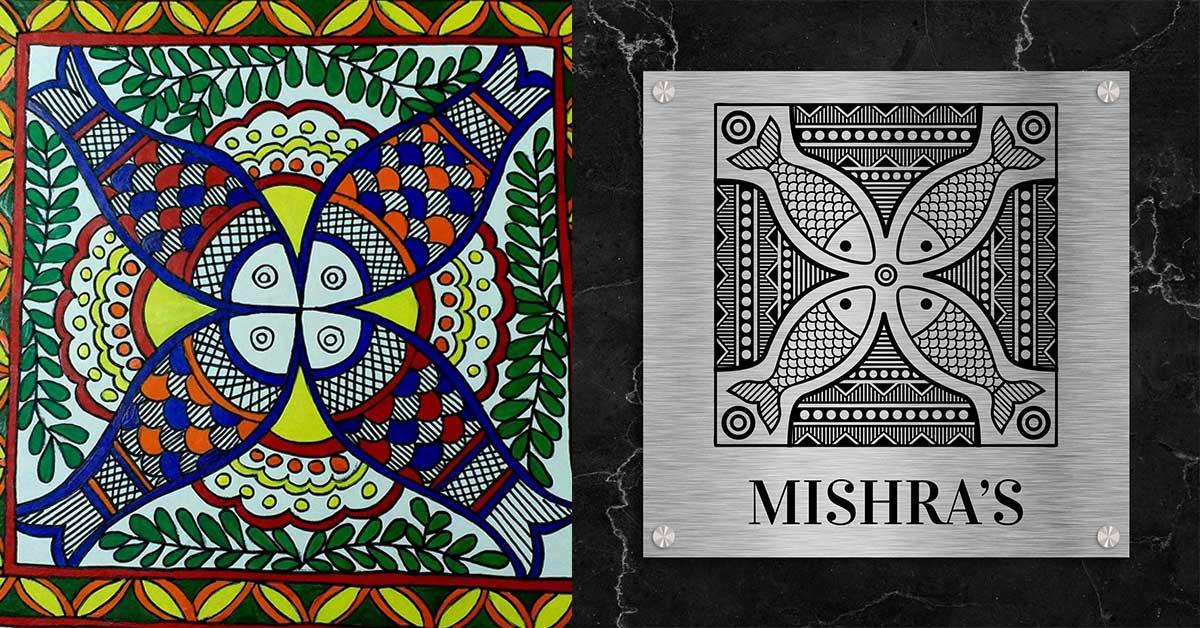
The Fine Arts of India inspired this beautiful Stainless Steel Name Plate collection
|
|
Time to read 1 min
|
|
Time to read 1 min
India is a vibrant land, rich in culture and diversity. One vital facet of our heritage that has survived the test of time is India's numerous traditional art forms that are still practiced by artisans and craftspersons to this day. In an effort to contemporize some of these ancients arts, we had artists create beautiful designs for five traditional art forms. These designs were then transferred onto stainless steel name plates, so you can take home a little slice of Indian art and history.
The Warlies (or Varlis) are an indigenous tribe living in the mountainous and coastal areas of Maharashtra and Gujarat. Their graphic, earthy, and geometric fine art is appreciated far and wide across the globe. How eye-catching would it be to have this beautiful design sensibility on a nameplate?
Ikat is a weaving style common to many world cultures. It is probably one of the oldest forms of textile decoration. However, it is most prevalent in Indonesia, India and Japan. In Central and South America ikat is still common in Argentina, Bolivia, Eduador, Guatemala, and Mexico. Ever wondered how this ancient and world-renowned art form might lend itself to nameplates?
As you make your way through the vast stretches of the Indian side of the world’s greatest salt desert (the Great Rann of Kutch), you will come across the odd bhunga (mud house) with walls beautifully-decorated in mostly circular mirror-work. This is Lipan Kaam. How might this organic and gorgeous art form look on nameplates?
Madhubani or Mithila painting is practiced in the Mithila region of India and Nepal. Painting is done with fingers, twigs, brushes, nib-pens, and matchsticks, using natural dyes and pigments. It is characterized by mesmeric geometrical patterns and earthy motifs. What would a nameplate with Mithila paintings look like?
The fine art of Bidri takes its name from the place where it originated, Bidar, Karnataka. It’s also known as Bidriware. It is a distinctive form of metal handicraft that was developed in the 14th century C.E. during the rule of the Bahamani Sultans. Can this epic and extraordinary art form be viewed through a contemporary lens?